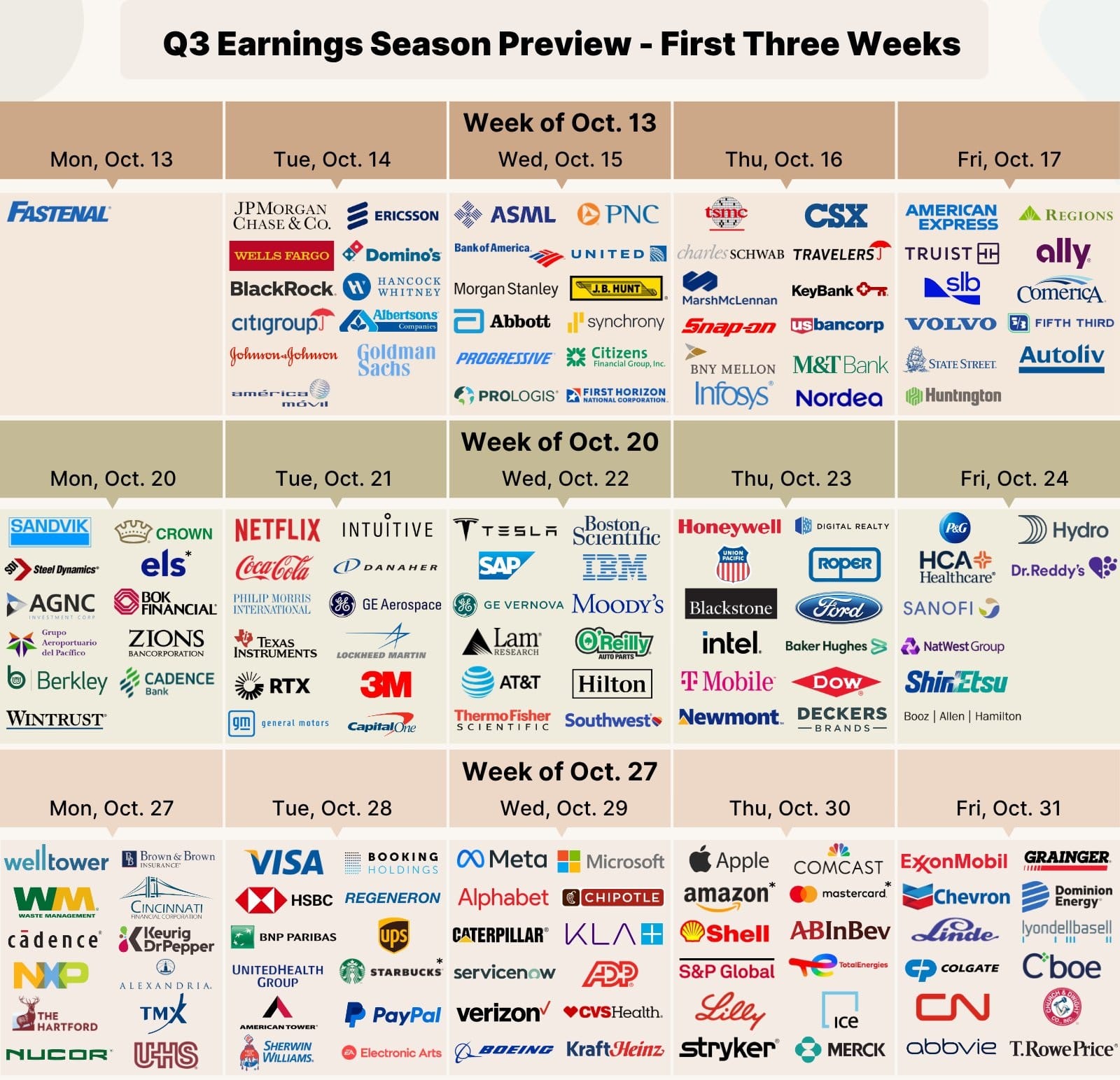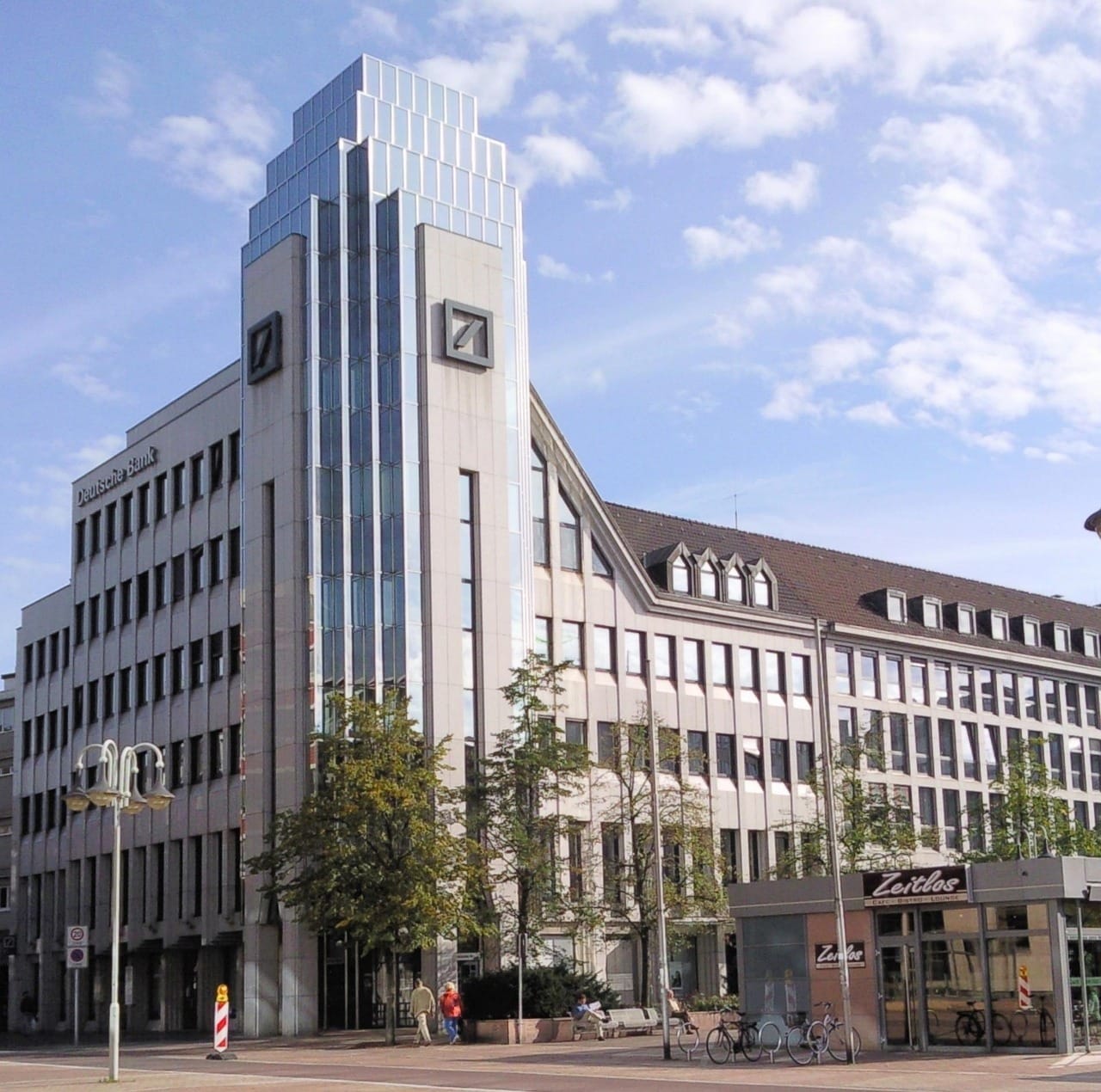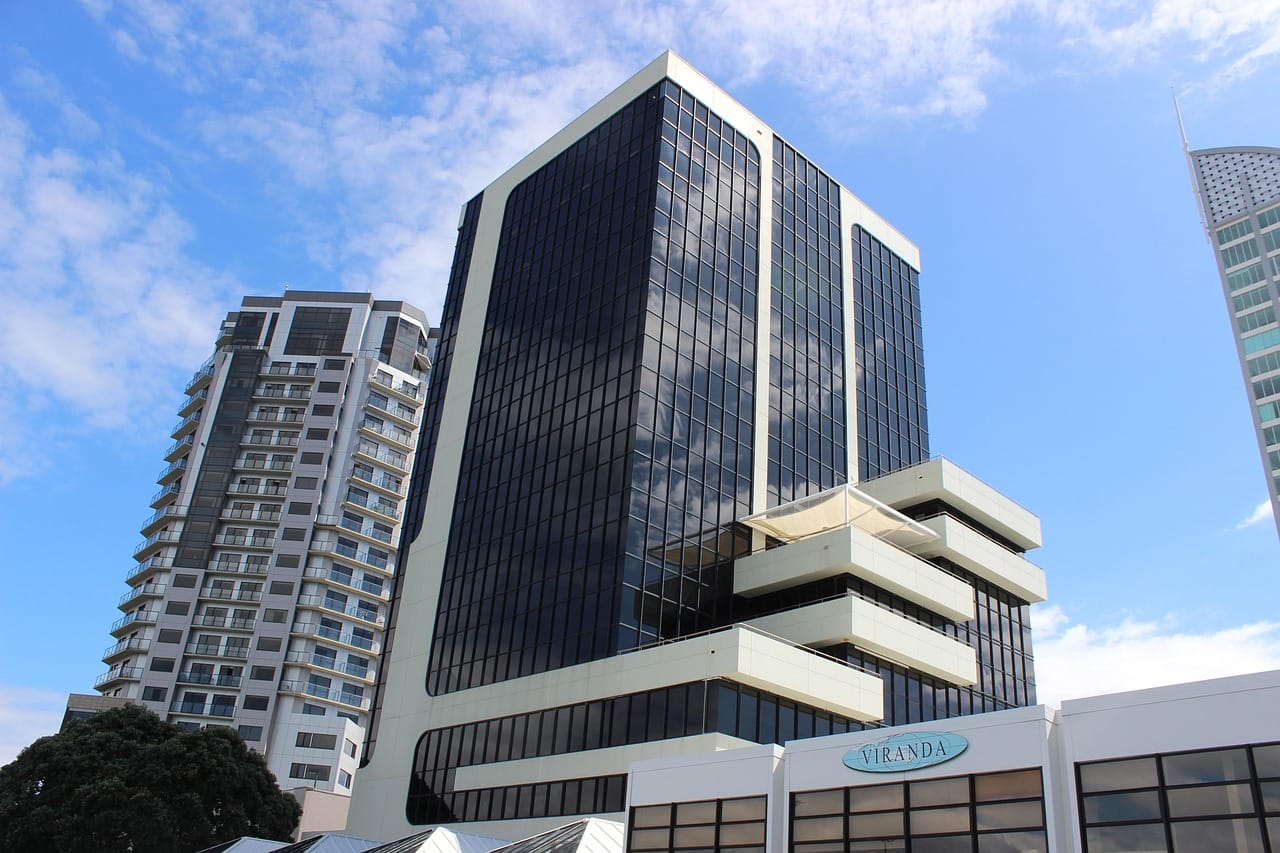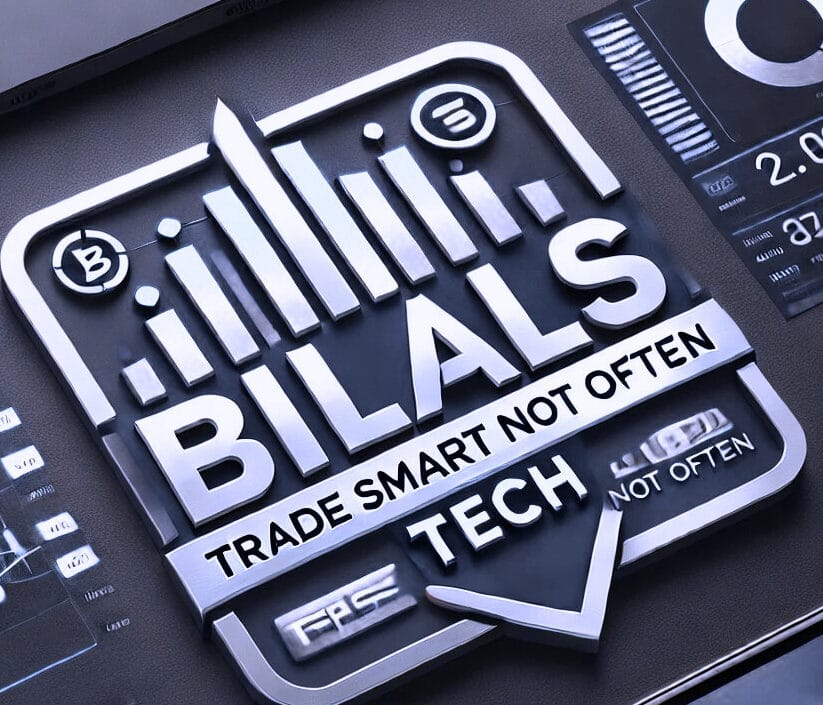North America News
U.S. Stocks Kick Off Week with Gains, But Sector Weakness Lingers
U.S. equity markets started the new week on a positive note, with major indices finishing Monday in the green. That said, the gains came with mixed signals under the surface as several major tech names ended lower.
By the close:
- Dow Jones Industrial Average added 312 points, up 0.78%, finishing at 40,524.79
- S&P 500 climbed 42.61 points or 0.79%, to 5,405.97
- NASDAQ Composite gained 107.03 points, or 0.64%, ending at 16,831.48
- Russell 2000 outperformed with a 1.11% rise, up 20.67 points to 1,880.87
Despite the broad gains, leadership was lacking in several heavyweight stocks:
- Amazon fell 1.48%
- Broadcom dropped 1.97%
- Nvidia dipped 0.20%
- Meta slid 2.2%
- Microsoft edged lower by 0.16%
Overall, the rally lacked strong market breadth, raising questions about the sustainability of momentum even as indices post solid day-one gains for the week.
NY Fed: Inflation Expectations Jump, Confidence Sinks
The New York Federal Reserve’s latest consumer survey shows inflation expectations for the next year rising to 3.6% in March, up from 3.1%. This reading came just before the so-called “Liberation Day” tariff announcement.
Longer-term expectations were more stable:
- 3-year outlook: unchanged at 3%.
- 5-year: slightly lower at 2.9% (from 3%).
Despite the inflation uptick, consumers expressed worsening sentiment on jobs, future earnings, and overall financial health. The percentage of households expecting a worse financial situation hit its highest level since October 2023. Expectations for stock market gains fell to their lowest since June 2022.
U.S. Port Volumes to Tumble as Tariff Fallout Begins
U.S. ports are bracing for a sharp drop in import traffic as the impact of trade tariffs begins to fully register. According to the latest Global Port Tracker report from the National Retail Federation and Hackett Associates, the coming months look grim despite a brief volume bump earlier this year.
February throughput reached 2.06 million TEUs (Twenty-foot Equivalent Units), up 5.2% year-on-year. March is estimated at 2.14 million TEUs, marking an 11.1% jump. But this short-term strength fades fast.
- May: Forecast to slide to 1.66 million TEUs, a 20.5% annual decline—ending a 19-month growth streak.
- June: Projected at 1.57 million TEUs, down 26.6%, the lowest since February 2023.
- July: Expected to be 1.69 million TEUs, a 27% drop.
- August: Estimated at 1.7 million TEUs, down 26.8%.
These projections reflect the delayed effect of tariffs and show how quickly sentiment and orders can reverse in global trade.

Trump: U.S. Will Impose Tariffs on Imported Pharmaceuticals
President Trump said new tariffs will be applied to imported pharmaceuticals, arguing the U.S. must stop depending on other nations for drug production.
He reiterated support for American automakers and alluded to possible developments following talks with Apple CEO Tim Cook. Trump said the U.S. would “solve the Iran problem” and again criticized the EU’s advantage in the auto sector—though he held back criticism of China and Vietnam this time around.
Fed’s Waller: Tariff Shock Among Biggest Economic Events in Decades
Fed Governor Christopher Waller described the new U.S. tariff regime as one of the largest economic shocks in recent history, warning that it adds complexity to already uncertain monetary policy.
Waller expects:
- March core PCE inflation around 2.7%
- Headline PCE inflation at 2.3%
While he sees inflation pressures gradually easing, the potential outcomes of tariffs vary:
- 10% tariffs: peak inflation near 3%
- 25% tariffs: could send inflation up to 5% and unemployment to 5%
He said the Fed should remain flexible, particularly with mixed signals from tariff exemptions. He also defended the idea that inflation from tariffs might be temporary, comparing it to a football strategy: “Just because the play failed once doesn’t mean you don’t try it again.”
Citi Walks Back U.S. Equities Upgrade Within Days, Shifts Focus to Japan
Citi has reversed its bullish stance on U.S. equities just days after upgrading them, downgrading its rating from “overweight” back to “neutral.” The call, which barely lasted a week, reflects rising concerns over market volatility and trade risks.
At the same time, Citi lifted its view on Japanese stocks, upgrading them to “overweight” from “underweight,” citing stronger fundamentals and improved relative value. In contrast, emerging market equities were downgraded to “underweight” from “neutral,” as global uncertainties and currency pressures weigh on the outlook.
Fed’s Kashkari Warns of Tariff Risks, Reaffirms Inflation Focus
Minneapolis Federal Reserve President Neel Kashkari emphasized over the weekend that even relatively modest tariffs could disrupt key U.S. industries—particularly agriculture—and cautioned against underestimating the impact of protectionist policies on trade flows.
Speaking on CBS’s Face the Nation, Kashkari noted, “Whether the tariff is 10%, 50%, or higher, the effects on trade can be severe.” He said concerns from farmers and other sectors are mounting amid the uncertainty surrounding U.S. trade policy.
Kashkari reiterated the Fed’s top priority remains keeping inflation under control, explaining that interest rate decisions won’t be swayed by short-term trade uncertainty unless inflation remains elevated. He added that long-term rates will ultimately reflect broader U.S. fiscal and trade strategies.
Despite market volatility, Kashkari assured that financial markets continue to function smoothly. “Trades are clearing, and markets are stable. We expect that to continue,” he said, while acknowledging that investors are still adjusting to the shifting U.S. policy environment.
Trump Signals Semiconductor Tariff Decision Coming Within Days
Former President Donald Trump said he will soon announce a specific tariff rate targeting semiconductors, indicating that further tech-focused trade measures are imminent.
Speaking over the weekend—and posting on his platform, Truth Social—Trump confirmed that decisions are being finalized on electronics-related tariffs, including those affecting smartphones and computers. While earlier speculation suggested steep tariffs of up to 145%, Trump indicated a 20% rate for those items, clarifying prior confusion.
When asked about the potential for iPhone tariffs, he said flexibility would be needed but did not rule them out. Trump also reiterated his stance against foreign ownership of U.S. strategic assets, saying he opposes the idea of a foreign company controlling U.S. Steel.
Sources, including Cantor Fitzgerald’s Howard Lutnick, have said that new sector-specific tariffs on semiconductors and pharmaceuticals could be introduced in the next one to two months. Trump’s comments confirm that tariffs will likely be a centerpiece of his trade strategy moving forward, especially in areas he deems critical to national security.
Ray Dalio: Trump’s trade war has US on brink of recession
- Spoke in a TV interview over the weekend
Bridgewater Associates founder Ray Dalio warned that President Donald Trump’s trade war has pushed the U.S. economy dangerously close to recession. “I think that right now we are at a decision-making point and very close to a recession,” he said on NBC’s Meet the Press.
Dalio described the abrupt tariff changes—many delayed by 90 days except for China—as “very disruptive,” comparing the effects to “throwing rocks into the production system.”
He also voiced broader concerns about U.S. debt, the growing budget deficit, and rising geopolitical tensions. “We’re having profound changes in the world order,” Dalio said. “How that’s handled could produce something that is much worse than a recession.”
He warned that, if multiple risks materialise simultaneously, the fallout “could be more severe” than past crises like those in 1971 or 2008.
Canada’s Wholesale Sales Edge Up in February, Inventory Surges
Canadian wholesale trade rose slightly in February, posting a 0.3% gain, just under the 0.4% expected by analysts. That’s a noticeable slowdown from January’s 1.2% jump.
Growth was concentrated in just two of seven sectors, with the largest increase coming from machinery, equipment, and supplies—up a strong 7.1%. On the flip side, the motor vehicles and parts sector dropped by 3.1%, totaling $14.3 billion in sales.
Inventories rose sharply across the board, up 2.2%, with all seven subsectors contributing. The inventory-to-sales ratio improved slightly to 1.50, down from 1.53.

Commodities News
Gold Slips from Highs as Risk Sentiment Improves
Gold prices pulled back on Monday following a surge last week, as easing fears over trade escalation took some shine off safe-haven demand. After touching a record high of $3,245, gold dipped toward $3,200, last trading around $3,208—down roughly 1% on the day.
The retracement follows a sharp rally on Friday, when gold surged nearly 2% after China imposed 125% retaliatory tariffs on U.S. imports. That move had spooked markets, triggering a flight to safety.
However, sentiment shifted over the weekend. The U.S. administration announced exemptions for several electronic imports—including smartphones, laptops, and PCs—from the full 125% tariff list. These products will still be hit with existing 20% tariffs, initially imposed in response to fentanyl concerns.
Commerce Secretary Howard Lutnick added that new, separate tariffs on semiconductors and other tech items are expected within two months.
As optimism returned to markets, U.S. equity futures jumped 1.1% to 2% Monday morning. That momentum weighed on gold, as investors rotated out of safe havens.
No major U.S. economic data is scheduled for release during the session, but comments from Fed officials and an expected trade policy update from Trump—particularly concerning semiconductors—will be closely watched.
Oil Ends Flat After Whipsaw Day of Trading
Crude oil futures ended Monday’s session nearly unchanged at $61.53, up just three cents. Prices swung from a high of $62.68 to a low of $60.59 during a volatile day.
Technically, crude is caught between:
- 100-hour MA: $60.21 (support)
- 200-hour MA: $62.67 (resistance)
A breakout from either side may guide direction this week as traders weigh geopolitical risks and tariff fallout.
Copper Prices Rebound as Buyers Defend Critical Support Zone
After a steep decline from its all-time high of $5.37 on March 26, copper has staged a comeback. The metal bottomed out at $4.03 on April 6, following a 25% drop, but has since bounced sharply.
Key support in the $3.92–$4.02 zone—an area that’s held since late 2022—helped stabilize prices. That same level once again served as a floor, allowing copper to rally as high as $4.62.
Currently, prices sit above both the 100- and 200-hour moving averages. The 200-hour MA at $4.517 is the key level bulls are trying to hold. If they succeed, the next target is $4.70, the 50% retracement of the March drop. A break below the 200-hour MA would shift focus to the 100-hour MA near $4.366.

Silver Holds Near $32.30 Amid Tariff-Driven Safe-Haven Surge
Silver remained strong on Monday, hovering near $32.30 during European hours. The precious metal has been supported by growing demand for safe-haven assets as the U.S.–China trade war escalates. China has matched Trump’s 145% tariffs with its own 125% duties on U.S. imports.
Investors are fleeing risk assets, with U.S. bond yields falling sharply and the dollar weakening—pushing more capital into metals. The U.S. 10-year yield fell more than 1% but remains elevated compared to early April levels.
Technically, silver is holding above the 20-day EMA and shows signs of a bullish reversal. The RSI has rebounded from oversold territory, with the next key resistance near $34.87. Momentum may continue if geopolitical tensions stay elevated and investors avoid U.S. assets.
Oil Market Balances Between Tariff Relief and Iranian Diplomacy
Oil opened the week subdued after falling for two straight weeks. Initial strength came from the U.S. decision to exclude certain electronics from tariffs, which buoyed risk appetite. However, Trump’s warning that exemptions are temporary cooled the optimism.
In parallel, indirect U.S.–Iran talks were described as constructive, possibly setting the stage for reduced sanctions risk—an outcome that could affect oil supply dynamics.
Positioning data shows that hedge funds slashed long exposure to ICE Brent crude by over 160,000 contracts—one of the largest weekly liquidations since records began. U.S. oil drillers are also reacting, with rig counts dropping by nine last week, the biggest fall since mid-2023.
Traders await Chinese trade data and OPEC’s upcoming monthly oil report to gauge whether demand outlooks will be revised due to rising trade tensions.
Chinese Investors Pour Into Gold ETFs as Trade Tensions Escalate
Gold ETF inflows in China hit a new record last week, driven by intensifying trade conflict with the U.S. According to Bloomberg, nearly 3 billion yuan (approx. $410 million USD) flowed into the country’s top four gold funds on Thursday alone, marking the highest single-day inflow to date.
Meanwhile, U.S.-based COMEX traders reduced their gold exposure, with managed money net longs falling by over 38,000 lots—the largest weekly cut since October 2023. Analysts suspect some of the selling was to meet margin calls amid broader market volatility.
Separately, SHFE data showed Chinese stockpiles of base metals declined sharply, especially copper, which dropped over 42,000 tonnes in a week—the steepest fall since April 2020.
Oil Rebounds to Resistance After Tariff Truce—But Will It Hold?
Crude prices have clawed back to a key resistance zone after last week’s rebound, which was fueled by a pause in U.S. reciprocal tariffs. Markets saw temporary relief from fears of trade-driven demand destruction.
Previously, oil was hammered by Trump’s tariff escalation and OPEC+ unexpectedly boosting output. Price action now shows a retest of the $62–64 level, where an inverted head and shoulders pattern is forming. Bulls will be watching for a breakout, which could push prices toward $72. A rejection here, though, might see crude drop to fresh lows.
Goldman Sachs Raises Year-End Gold Price Forecast
Goldman Sachs has increased its year-end gold price target to $3,700 per ounce, up from the previous forecast of $3,300 made at the end of March. The revision is attributed to ongoing global economic uncertainty, robust central bank demand, and increased inflows into gold-backed exchange-traded funds, driven by recession concerns.
Goldman Sachs Lowers Oil Price Projections Amid Supply Surplus
Goldman Sachs has revised its oil price forecasts downward, citing expectations of persistent supply surpluses and subdued demand growth. The bank now projects Brent crude to average $63 per barrel and WTI at $59 for the remainder of 2025, with further declines anticipated in 2026. The outlook reflects anticipated market oversupply and modest increases in global oil demand.
Europe News
European Markets Start the Week On A Solid Footing
European stocks kicked off the trading week with a powerful move higher across major indexes, outperforming their U.S. counterparts.
Here’s how the major benchmarks performed Monday:
- Germany’s DAX: up 2.85%
- France’s CAC 40: up 2.37%
- UK FTSE 100: added 2.14%
- Spain’s Ibex: climbed 2.64%
- Italy’s FTSE MIB: gained 2.80%
The strong rally comes amid improved global risk sentiment and hopes that escalating trade tensions may slow or reverse, especially after the U.S. granted partial tariff exemptions over the weekend.

UK Asking Prices Hit Record High Despite End of Tax Break
Property prices in the UK climbed in early April, reaching new highs even after the expiration of a temporary tax relief program. According to Rightmove, the average asking price rose to £377,182—a 1.4% increase from March and up 1.3% compared to the same time last year.
This growth outpaced typical seasonal trends, driven by a notable uptick in both buyer activity and new property listings. Rightmove attributed the market’s resilience to increased housing stock and steady demand, which helped offset the anticipated slowdown following the tax incentive’s conclusion.
However, the report contrasts with recent Halifax data showing a 0.5% monthly dip in prices, and Bank of England figures indicating a drop in mortgage approvals. Even so, the housing market saw a 5% rise in buyer inquiries year-on-year, and available homes for sale climbed by 4%, signaling ongoing momentum despite mixed signals across indicators.
SNB Sight Deposits Edge Higher as Market Eyes Potential Moves
The Swiss National Bank reported that total sight deposits rose to CHF 446.9 billion in the week ending April 11, up from CHF 443.7 billion the prior week.
Domestic deposits increased to CHF 438.4 billion from CHF 433.4 billion. While the uptick is modest, analysts are watching this data point closely as a potential gauge of future SNB intervention or policy shifts—particularly if financial conditions begin to tighten further.
Here’s the trend for the year:

Swiss Producer, Import Prices Inch Up in March, but Yearly Trend Still Negative
Switzerland’s producer and import prices rose marginally in March, with official data showing a 0.1% monthly increase, compared to February’s 0.3% gain. Import prices remained flat on the month.
Year-on-year, the combined index dipped by 0.1% versus March 2024, reflecting subdued price momentum in upstream sectors. The Federal Statistics Office published the figures on April 14 after a brief delay.
Risk of a significant global slowdown has increased considerably – German economy ministry
- Remarks by the German economy ministry on US tariffs
- Effects of US tariffs are not yet reflected in current economic indicators
- The risk of a significant global slowdown has increased considerably
- That will also have an impact on the German economy
- Uncertainty about development of German exports is exceptionally high due to tariffs policy
Deutsche Bank Expects ECB to Cut Rates as Trade and Growth Risks Rise
Deutsche Bank analysts now firmly expect the European Central Bank to begin cutting interest rates this Thursday, citing the economic fallout from ongoing tariff disputes, weaker demand, and shifting financial conditions.
The bank said the case for a rate cut is now overwhelming. Assumptions that reciprocal tariffs would push inflation higher have not materialized. Instead, recent developments—including a stronger euro, falling oil prices, and trade diversion—have created downward pressure on inflation.
Deutsche Bank lowered its eurozone GDP forecast for 2025 from 0.8% to 0.5%, while maintaining a 2026 projection of 1.0%. Its revised inflation outlook sees headline HICP averaging 2.0% in 2025 and 1.7% in 2026.
The ECB is expected to maintain a dovish tone even as it begins easing, with further cuts likely in June, September, and December. Deutsche Bank believes the central bank’s policy is now approaching neutral territory after 150 basis points of tightening. The overall message: the ECB will remain flexible in navigating an increasingly complex global economic landscape.
Asia-Pacific & World News
Xi Tells Vietnam: Let’s Stand Together Against ‘Unilateral Bullying’
President Xi Jinping has urged Vietnam to deepen its cooperation with China and take a unified stance against what he called “unilateral bullying”—a veiled shot at the U.S. trade strategy.
In talks with Vietnamese leadership, Xi proposed six new steps to strengthen ties and called for frequent leader exchanges “like close relatives.” The two nations signed 45 cooperation agreements, spanning:
- Artificial intelligence
- Customs and inspections
- Agriculture
- Cultural exchange
- Infrastructure connectivity
Xi also emphasized collaboration in combating telecom fraud and cross-border crime.
China Reacts Coolly to Partial U.S. Tariff Reprieve: ‘Only a Minor Correction’
Beijing offered a restrained response to the Trump administration’s latest decision to ease some tariffs, characterizing it as a limited adjustment rather than a meaningful shift in trade relations.
On Sunday, China’s Ministry of Commerce acknowledged the U.S. move to exempt a range of advanced consumer electronics—including smartphones and computers—from the full brunt of retaliatory tariffs. However, officials emphasized that the gesture falls short of addressing the deeper, structural issues in the ongoing trade dispute.
“This is merely a small step by the United States toward reversing its harmful and unilateral trade tactics,” the ministry said in a statement, referring to the sweeping tariffs Washington had earlier imposed on Chinese imports, which reached rates as high as 145%.
While the rollback signals a softening of tone from Washington on specific goods, China’s measured response reflects skepticism about the broader intent behind the change. Beijing sees the exemption as narrowly focused and insufficient to resolve the underlying tensions that have strained bilateral economic ties.
The message from China is clear: a few tariff exemptions won’t erase years of aggressive trade measures, and substantial policy shifts are still needed before any true normalization of relations can occur.
China’s Central Bank Considers Monetary Easing to Counter Trade Pressures
The People’s Bank of China (PBOC) is anticipated to implement further monetary easing in the second quarter of 2025, including a 15 basis point reduction in the loan prime rate (LPR) and at least a 25 basis point cut in the reserve requirement ratio (RRR), according to a Reuters poll. Analysts from Citi suggest that domestic stimulus measures may be expedited in response to increasing external pressures, with expectations of additional fiscal funding around mid-year. Recent fiscal policies indicate a proactive approach by Beijing to support domestic demand amid global economic uncertainties.
China’s Export Surge in March Amid Tariff Pressures
In March 2025, China’s exports experienced a significant year-over-year increase of 12.4%, totaling $313.9 billion. This surge is attributed to exporters expediting shipments ahead of the anticipated implementation of higher U.S. tariffs. Despite the export growth, imports declined by 4.3%, resulting in a trade surplus of $102.6 billion for the month. Analysts suggest that this export boost is temporary, with expectations of a downturn in the coming months due to the new tariff regime.
Goldman Sachs Lowers Chinese Stock Index Targets Amid Trade Concerns
Goldman Sachs has revised its 12-month targets for Chinese stock indexes, citing escalating trade tensions with the United States. The MSCI China Index target was reduced to 75 from 81, while the CSI 300 Index was lowered to 4,300 from 4,500. The investment bank pointed to heightened concerns over a potential global recession and the risks associated with the decoupling of the world’s two largest economies, particularly in capital markets, technology, and geopolitical spheres.
China Imposes Informal Restrictions on Stock Sales to Stabilize Markets
Chinese stock exchanges have reportedly set informal daily limits on net share sales by hedge funds and large retail investors, aiming to stabilize markets amid escalating trade tensions with the U.S. The soft cap, approximately 50 million yuan per investor per day, is enforced through verbal warnings from brokerages, with potential suspension of trading accounts for non-compliance. These measures accompany other state-backed interventions, including increased stock purchases by the Central Huijin fund and corporate share buybacks, to maintain market stability.
Xi Jinping Advocates for Strengthened China-Vietnam Industrial Collaboration
President Xi Jinping has called for deeper industrial and supply chain cooperation between China and Vietnam, emphasizing the importance of collaboration in emerging sectors such as 5G technology, artificial intelligence, and green development. During his state visit to Vietnam from April 14 to 15, Xi highlighted initiatives like East Asia Cooperation and Lancang-Mekong Cooperation as platforms for regional integration. He also stressed the need to uphold multilateral trade systems and stabilize global supply chains, expressing China’s openness to increased Vietnamese imports and support for Chinese investment in Vietnam.
China Enhances Inspection of U.S. Poultry Imports
China’s General Administration of Customs has reported the detection of salmonella in imported American poultry meat and bone meal. In response, the agency announced plans to intensify the inspection and quarantine processes for such imports, adhering strictly to existing laws and regulations. This move underscores China’s commitment to ensuring food safety amid ongoing trade tensions.
PBOC sets USD/ CNY reference rate for today at 7.2110 (vs. estimate at 7.3251)
- PBOC CNY reference rate setting for the trading session ahead.
China Suspends Rare Earth Exports Following New Controls
Shipments of seven rare earth elements from China have ceased following the government’s implementation of stricter export controls. The halt, which began on April 4, requires exporters to obtain licenses from the Ministry of Commerce, a process that could take weeks or months. This move, seen as a response to increased U.S. tariffs, has raised concerns about global supply chains, as China accounts for approximately 90% of global rare earth production. Analysts warn that prolonged delays could disrupt industries reliant on these critical materials. The info comes via a Reuters report over the weekend.

New Zealand’s March Retail Sales Decline
New Zealand’s retail sales indicator for March 2025 showed a year-over-year decrease of 1.6%, following a 4.2% decline in the previous month. On a monthly basis, sales fell by 0.8%, reversing a 0.3% increase in February. The data, derived from card spending covering approximately 68% of core retail sales, reflects ongoing challenges in the retail sector.
New Zealand’s Services Sector Contracts in March
The BusinessNZ Performance of Services Index (PSI) for New Zealand registered at 49.1 in March, indicating a contraction in the services sector. This marks a slight decline from February’s reading of 49.0 and remains below the long-term average of 53.0, suggesting subdued activity in the sector.

BNZ’s Senior Economist Doug Steel:
- “combining together the PSI and the Performance of Manufacturing Index (PMI), the Composite Index (PCI) suggests a modest economic recovery. The extent of growth implied by our indicator has been dampened by the softer PSI readings”.
Singapore Eases Monetary Policy Amid Slowing Growth
The Monetary Authority of Singapore (MAS) has slightly eased its monetary policy for the second consecutive meeting, adjusting the rate of appreciation of the Singapore dollar nominal effective exchange rate (S$NEER) policy band. This move comes as Singapore’s first-quarter GDP grew by 3.8% year-over-year,
Bank of Japan Governor Ueda says US tariffs likely to weigh on global & Japanese economies
- Bank of Japan Governor Ueda
- Global, Japanese economic uncertainty has increased significantly due to US tariff policy\
- US tariff policy likely to put downward pressure on global, Japanese economies through various channels
- US tariffs likely to exert both upside, downside pressure on prices
- Impact on Japan’s economy will also depend largely on upcoming developments in U.S. tariff policy
- BoJ to take monetary policy decision to achieve 2% inflation target, while monitoring economic, price, and financial developments without any preconception
Japan Prime Minister Ishiba says cannot make continuous compromises in US talks
- Japan digging in?
Japan Prime Minister Ishiba speaking in Tokyo:
- says cannot make continuous compromises in US talks
- ASEAN is an critical part of Japan-US economic cooperation
- US tariffs have potential to disrupt the global economic system
- There must be a point where U.S. Steel remains an American company and benefit to Nippon Steel is realised
Japan finance minister Kato says excess forex volatility is undesirable
- Kato says the view is shared by the US
Japan Finance Minister Kato:
- US, Japan share view excessive FX volatility undesirable
- FX rate to be determined by markets
Japan economy minister Akazawa:
- FX issues will be addressed between finance minister Kato, US Treasury Secretary Bessent
Crypto Market Pulse
Crypto Market Pauses After Surge; BTC Hits $85K on Saylor Signal
Bitcoin pushed past $85,000 on Monday, up 15% from last week, after Michael Saylor hinted at fresh BTC purchases. Strategy filings revealed $6 billion in paper losses from prior buys, but investor sentiment turned bullish as ETF outflows dried up.
Outflows from U.S. Bitcoin ETFs dropped from $872 million earlier in the week to just $1 million Friday—signaling easing selling pressure.
Altcoin update:
- Ethereum: +4%
- Solana: +2%
- Mantra (OM): -91% after insider trading rumors
- BCH, TON, HBAR also in red
News highlights:
- CryptoPunk seller pleads guilty to $13M tax evasion in Pennsylvania
- Lomond School (UK) to accept Bitcoin tuition payments
- JPMorgan adds GBP blockchain payments via Kinexys, expanding global crypto infrastructure
Crypto AI Sector Holds Gains After Nvidia, OpenAI Boost
Top crypto AI tokens continue to post strong weekly gains despite a 5% Monday dip. The sector’s total market cap is around $21 billion. The pullback is seen as profit-taking after a strong run sparked by inflation data and tech developments.
Weekly leaders:
- Render (RNDR): +45.6%
- Bittensor (TAO): +30.4%
- FET (Artificial Superintelligence Alliance): +35%
- ICP: +10.3%
- NEAR: +6.3%
- SEI: Top-searched token on CoinGecko
Catalysts to watch:
- Nvidia’s 10% stock rally, following a $500M U.S. supercomputer investment
- OpenAI’s expected launch of premium AI agents—potentially this week
These developments could trigger renewed capital flows into the AI-token space if sentiment remains bullish.
ETH Faces Resistance as SEC Delays Staking ETF Decision
Ethereum edged up to $1,640 Monday, but momentum slowed after the SEC postponed its decision on Grayscale’s bid to allow staking in ETH ETFs.
The new decision deadline is June 1, 2025, likely timed to align with the swearing-in of new SEC Chair Paul Atkins—seen as crypto-friendly. Bloomberg’s James Seyffart believes approval is likely later this year.
Currently, leveraged inverse ETH ETFs are among the year’s top performers:
- ETQ: +148% YTD
- ETHD: +162% YTD
Technically, ETH is at risk of rejecting at a descending trendline, and liquidations hit $77.8M in the last 24 hours. Bulls will need to break above that resistance or face a potential pullback to $1,522.

XRP Tests Breakout Zone as Whales Defend $2 Support Level
XRP held its ground at the $2 mark on Monday as bullish sentiment strengthened after Trump temporarily paused new reciprocal tariffs. The crypto rallied to $2.15 during early European trading, with large holders—so-called whales—resuming accumulation.
Wallets holding between 1M and 100M XRP now represent over 20% of the total supply, reflecting a renewed risk-on attitude. With technical indicators such as the MACD and RSI flashing bullish signals, traders are watching for a move toward $3.00.
However, derivatives open interest dropped 2.75% to $3.29 billion, and trade volume declined 40%, raising questions about whether this rally has staying power. Key resistance sits at $2.25, with long liquidation risks lingering.
Ethereum Whale Buys 16,000 ETH as Foundation Backs L1 and Real-World Asset Focus
Ethereum is seeing renewed bullish activity after a whale accumulated nearly 16,000 ETH, coinciding with the Ethereum Foundation’s updated development roadmap. Co-Executive Director Tomasz K. Stańczak outlined a simplified roadmap emphasizing performance upgrades to Layer 1, improved support for real-world assets (RWAs), stablecoins, and long-term security.
ETH is trading around $1,680—up 5% since the start of the week—as momentum builds following a broader market rebound. Traders now eye a move toward $2,000. However, strong resistance from key EMAs (50, 100, 200-day) may temper gains.
Whale accumulation and the focus on asset issuance directly on L1 may increase gas demand, boosting ETH’s utility. But macro uncertainty, especially from U.S.–China trade tensions, still casts a shadow on long-term trends.
Bitcoin Sits at Pivotal Level After Risk Rally Triggered by Tariff Pause
Bitcoin is trading at a crucial technical level as bulls and bears battle for control. Last week’s pause in reciprocal tariffs gave the crypto market a lift, temporarily easing global growth concerns. Bitcoin responded with a rally, alongside other risk assets.
However, optimism was tempered when Trump signaled that exemptions on tech products would be brief and more tariffs are on the table. On the chart, BTC now hovers at a long-term trendline, with sellers likely to defend the level. If the price breaks higher, bulls may target $90,625, while a failure could see it sliding toward the $70,000 region.

The Day’s Takeaway
Day’s Takeaway: Key Market Trends & Developments
United States: Gains With Caveats
- Major U.S. indices closed higher to begin the week, though market breadth was weak:
- Dow Jones: +312 pts (+0.78%) to 40,524.79
- S&P 500: +0.79% to 5,405.97
- NASDAQ: +0.64% to 16,831.48
- Russell 2000: +1.11% to 1,880.87
- Tech underperformed:
- Amazon (-1.48%), Meta (-2.2%), Nvidia (-0.20%), Microsoft (-0.16%), Broadcom (-1.97%)
- Tariff uncertainty lingers:
- Trump paused steep tariffs on electronics but confirmed upcoming levies on semiconductors and pharmaceuticals.
- Fed Commentary:
- Fed’s Waller called the new tariffs one of the biggest shocks in decades, with inflation peaking at up to 5% in extreme scenarios.
- NY Fed consumer survey showed 1-year inflation expectations rising to 3.6% and household confidence deteriorating.
- Ports warning: U.S. port import volumes are expected to plunge from May onward as tariffs take full effect, ending a 19-month growth streak.
Canada: Wholesale Trade Slows
- February wholesale sales rose +0.3%, below expectations (+0.4%) and sharply down from January’s +1.2%.
- Inventories climbed +2.2% across all sectors.
- Machinery and equipment led gains (+7.1%), while motor vehicles declined -3.1%.
Commodities: Volatility Across the Board
- Gold pulled back from last week’s high of $3,245, now around $3,208, down 1% on the day as risk appetite returned.
- Crude oil settled at $61.53 after a volatile session—caught between key moving averages. Tariff relief helped prices stabilize.
- Copper rebounded sharply from a multi-week low, bouncing off strong technical support and reclaiming key MAs. Bulls now eye a move toward $4.70.
- Silver held firm near $32.30, benefiting from safe-haven demand amid U.S.–China trade escalation.
- China’s gold ETFs saw record daily inflows (~$410M), signaling domestic demand for safe assets remains strong.
Europe: Big Gains Across the Board
- European indices outperformed Monday:
- DAX: +2.85%
- CAC 40: +2.37%
- FTSE 100: +2.14%
- Ibex: +2.64%
- FTSE MIB: +2.80%
- Traders responded positively to the U.S. partial tariff rollback and a broader sense that escalation may pause—at least for now.
Asia & Rest of the World
- China–Vietnam ties in focus:
- Xi Jinping called for deeper bilateral cooperation and unity against “unilateral bullying.”
- Signed 45 new agreements spanning AI, agriculture, culture, and crime prevention.
- Switzerland:
- March producer and import prices rose just +0.1% m/m. YoY, prices were down -0.1%.
- SNB sight deposits rose to CHF 446.9B, signaling mild central bank activity.
- Singapore:
- MAS slightly eased monetary policy, citing weaker growth outlook and inflation pressures well below 2%.
- New Zealand:
- Retail sales down -1.6% y/y and services PMI at 49.1, both pointing to economic softness.
- UK housing:
- Rightmove reported asking prices hit a record £377,182, up 1.4% m/m and 1.3% y/y.
- ECB preview:
- Deutsche Bank expects a rate cut Thursday, citing trade war drag and inflation pressures easing.
Crypto & Digital Assets: Sector Momentum and Whale Moves
- Bitcoin surged to $85,100, fueled by ETF outflows cooling and Michael Saylor signaling more BTC purchases.
- Ethereum hovered at $1,640, but faces trendline resistance as the SEC delays its staking ETF decision to June 1.
- XRP held $2.15 with whales accumulating aggressively despite broader crypto volatility.
- Ethereum Foundation revealed a roadmap refresh, prioritizing real-world assets (RWAs), stablecoins, and Layer 1 improvements.
- Crypto AI tokens:
- Riding Nvidia’s 10% stock recovery and OpenAI’s rumored product launch, tokens like Render (+45%), FET (+35%), and Bittensor (+30%) led gains.
- Regulatory headlines:
- A Pennsylvania man pleaded guilty to $13M in NFT-related tax evasion.
- Lomond School in Scotland became the UK’s first to accept Bitcoin for tuition.
- JPMorgan’s Kinexys added GBP blockchain payments to its platform, supporting 24/7 real-time settlement.

















